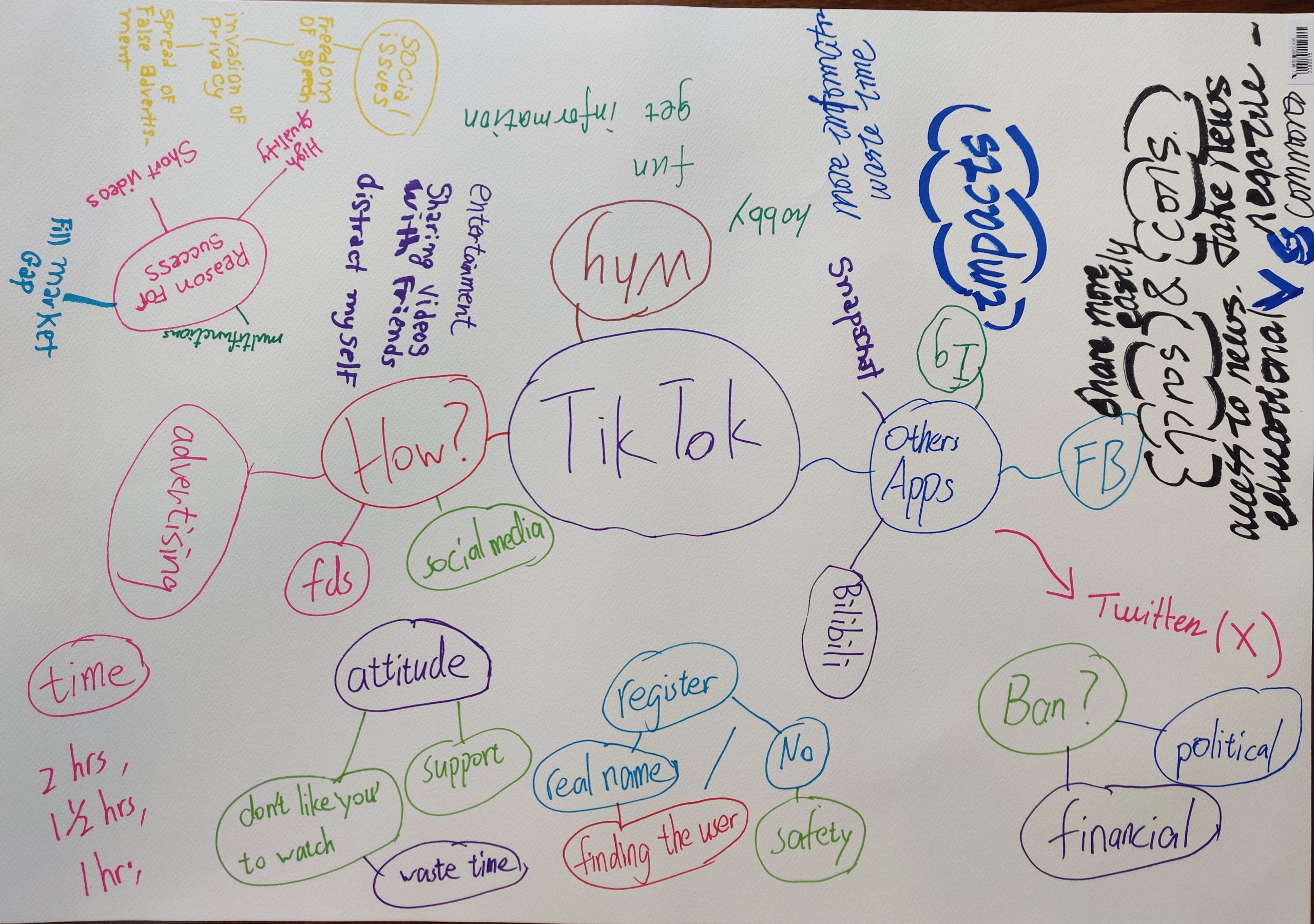CKPC World Café – social media around the world
To promote communication and exchange of ideas among students, including international and exchange students, CKPC holds a series of World Café sessions. The World Café is a group activity designed to create a friendly and welcoming environment to connect multiple ideas and perspectives on a topic. The table host engages participants in several rounds of conversation, collecting and sharing their inputs as “Graphic Recording” along the way. Participants also exchange ideas during the short tea breaks, which keep the flow of discussion and sharing throughout.
In the third session of this semester, students from different cultural backgrounds took part in several rounds of stimulating conversations on social media and their influence on the world’s youngsters. The participants used Tik Tok (which is the international version of the Chinese App Douyin) as the primary example for the conversations.
Most students used Tik Tok/Douyin for viewing short videos as a form of entertainment and for sharing videos and feelings with friends. They typically used it for short periods of time, ranging from half an hour per day to a couple times per week. Most have used it for 4 to 6 years. They also kept their identity anonymous via aliases in such social medium platforms.
As to why such social media became so successful, students suggested the following:
- The videos were short compared to Youtube or Bilibili, making it easier to scroll through large number of contents
- The software kept feeding users with stimulating videos so they became kind of addictive to it
- Based on a user’s usage profile, the software used certain AI techniques to suggest large number of interesting videos
- Some users produced many popular videos and earned money that way
The students discussed the impacts of such social media. On the positive side,
- It was an effective way to disseminate information to many people. For example, users have used them to help find lost children
- Users might raise awareness on social issues or even influence people’s views.
- There were educational contents, allowing users to learn at their leisure time
On the negative side:
- Often it was a waste of time scrolling through many entertainment videos
- One could not tell whether the information was fake. Furthermore, certain inappropriate contents might mess up teenager’s minds.
- Strangers could send messages to you, which might lead to fraud
Students also suggested that social media platforms should bear certain social responsibilities. For example, they should block inappropriate contents, performed fact checking when reported by users, and reminded users to take a break after certain usage time. They didn’t agree to banning of TikTok by certain countries because they thought that those countries should educate their people instead of directly banning it. Besides, they disagreed to real-name system for using it since they believed users can hide their identity and other private information.
During the World Café session, the participants shared their ideas and feelings through engaging conversations. At the final presentation, students from each table used the “Graphic Recording” to report on their findings. They all found the activity very stimulating and rewarding.



